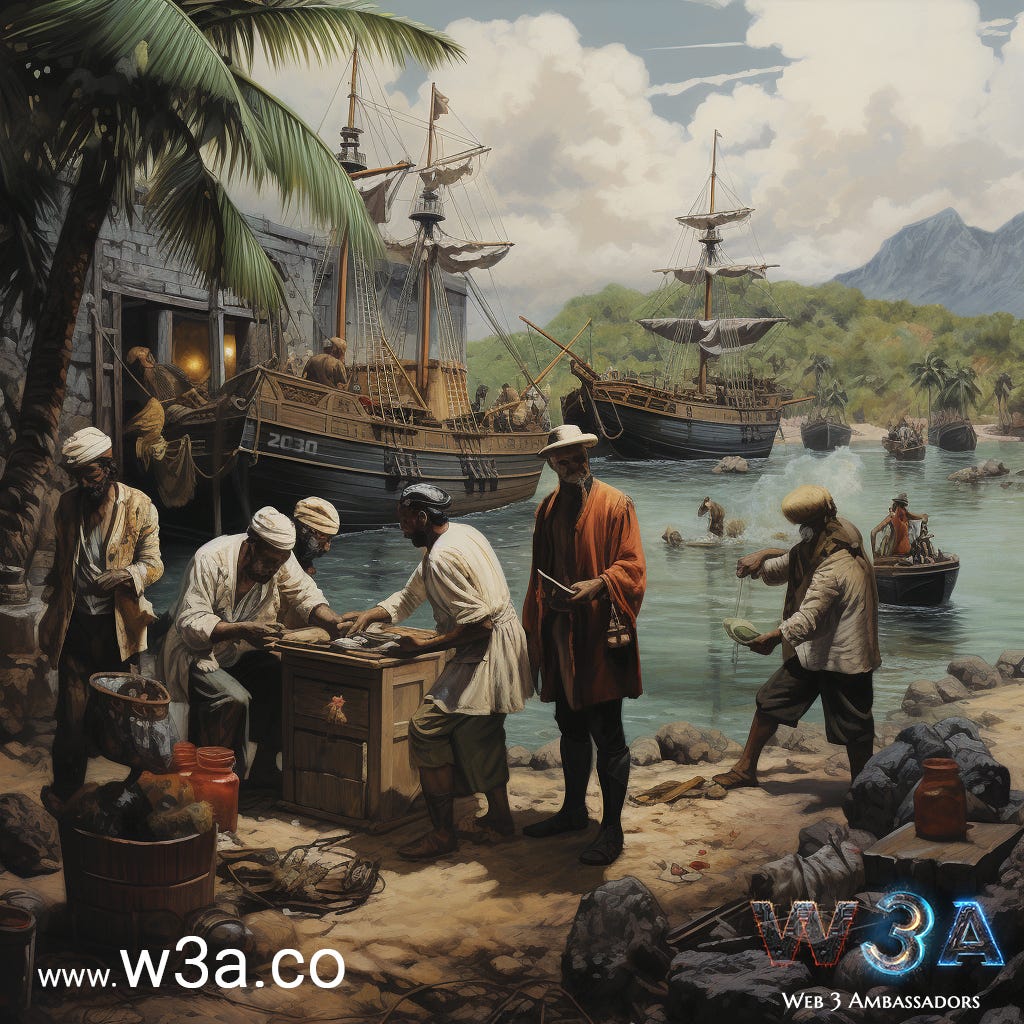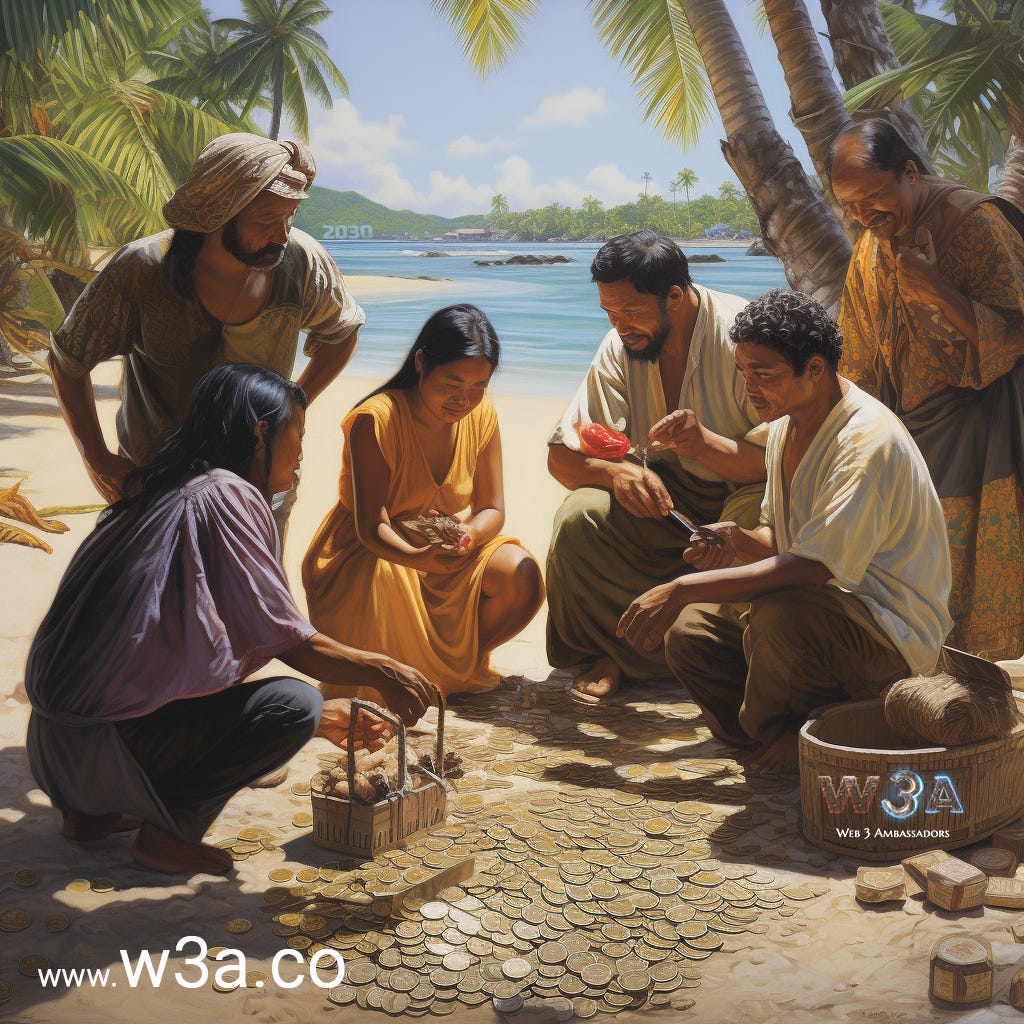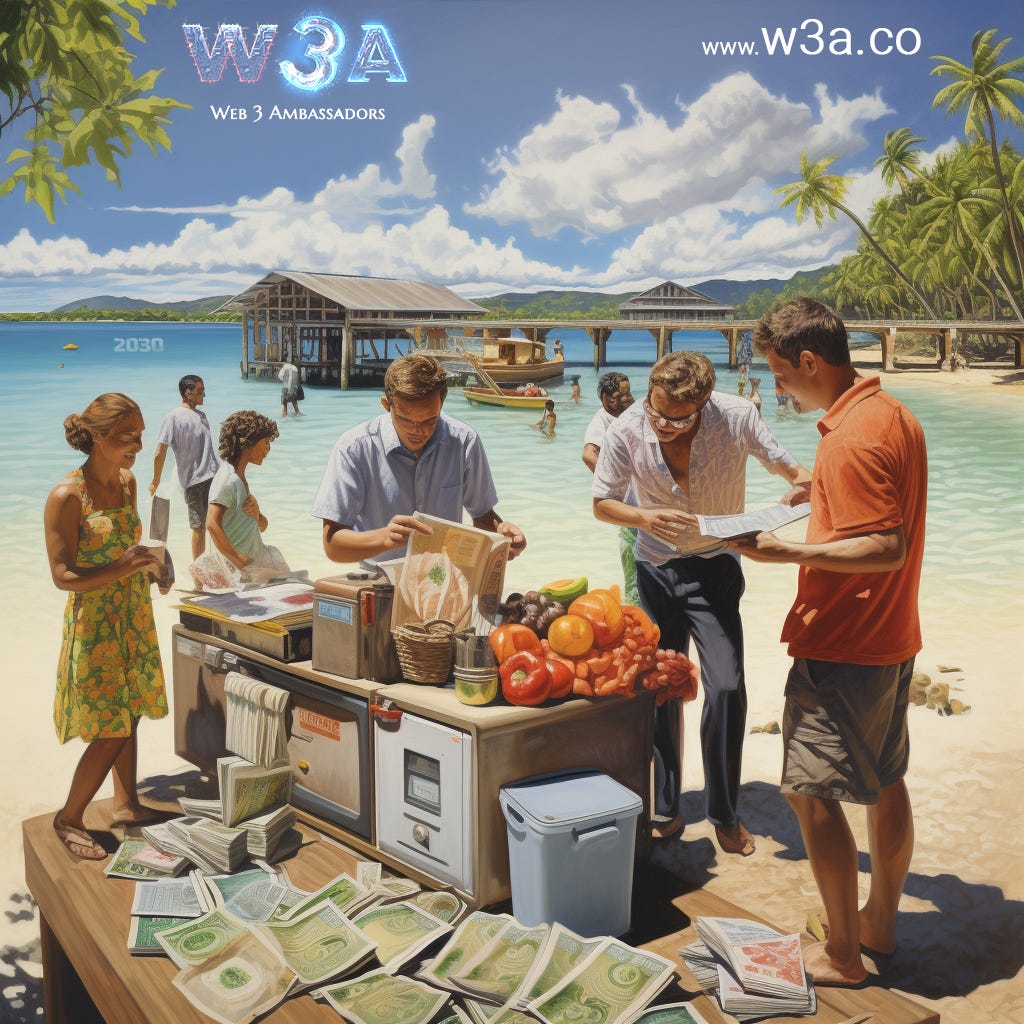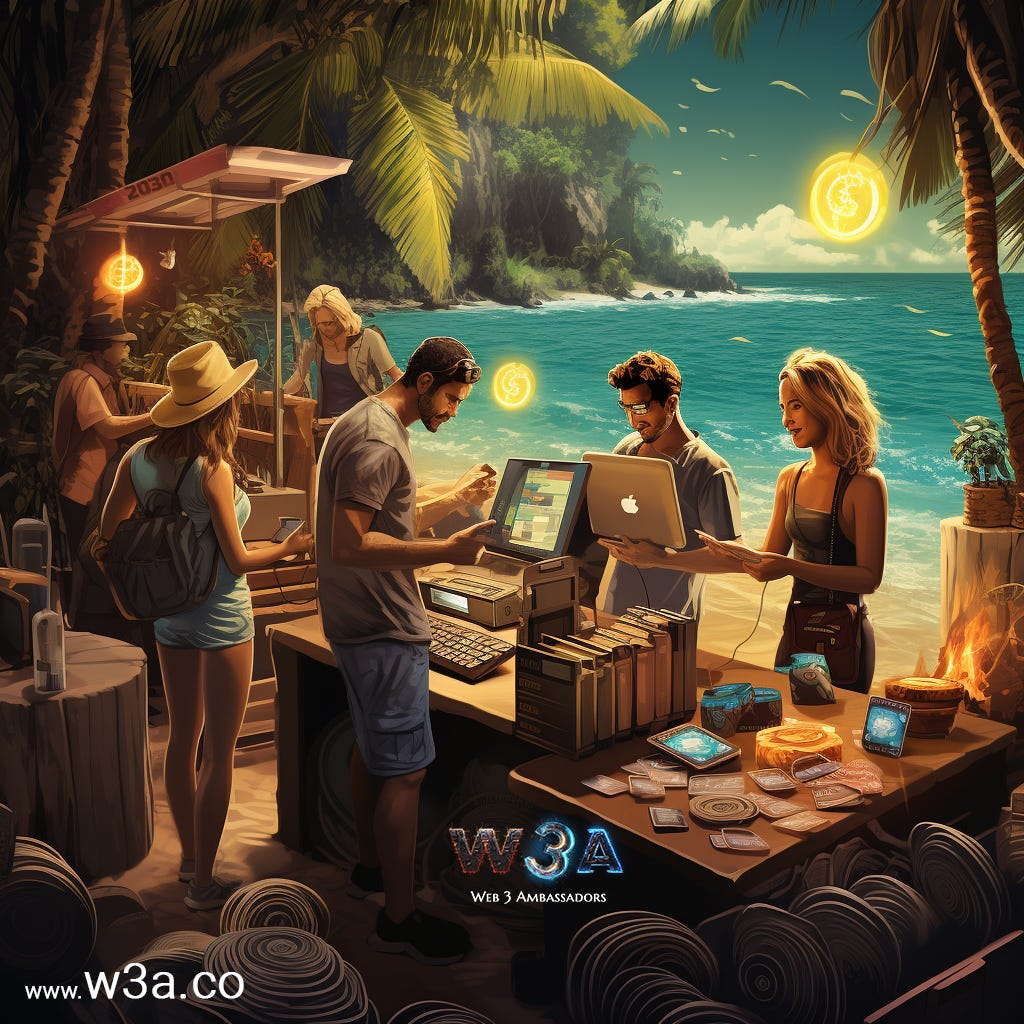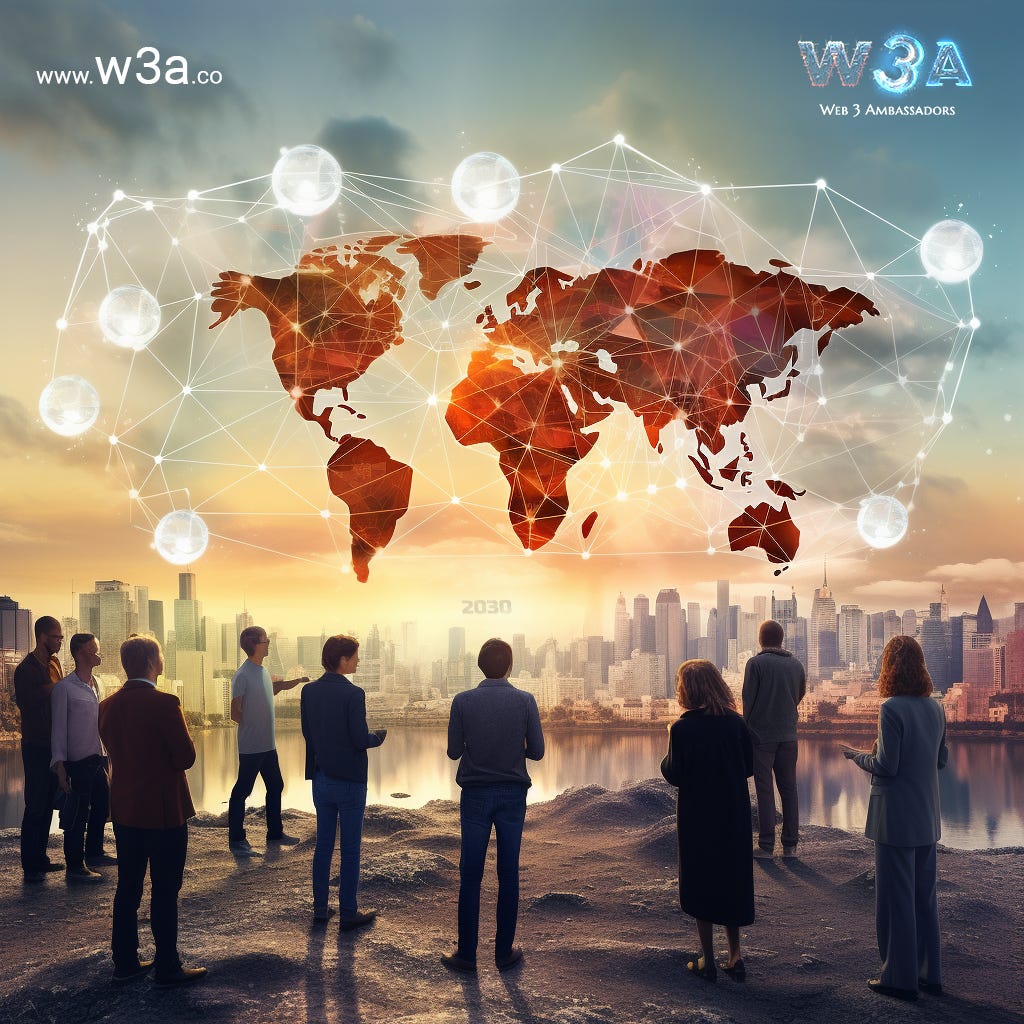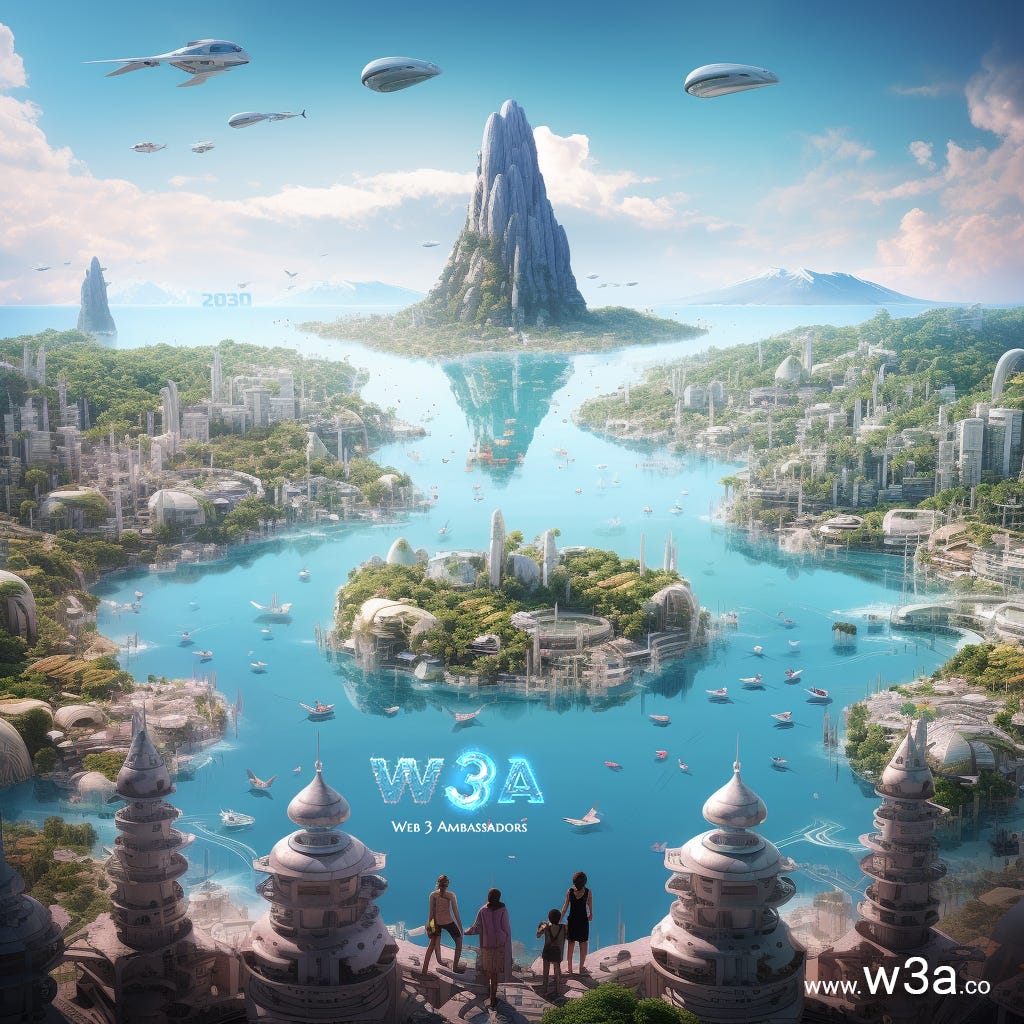Value in Web 3?
Analogy much?
To answer the question, here’s an analogy that explains how humans evolved their representation of value over many thousands of years, from physical objects to virtual symbols:
Let's consider the journey of human value representation - as a series of interconnected islands. Each island represents a stage in the evolution of how humans have perceived and represented value over thousands of years.
Island 1: Barter Archipelago
Imagine a vast archipelago where people lived on different islands. In the beginning, each island had its own resources, like knives or tools, boats, ropes, coconuts, fish, and shells, etc. People exchanged these physical resources directly, island to island, in a system known as barter. But as these islands grew and their needs became more diverse, barter became complex and inconvenient.
Island 2: Token Peninsula
To simplify exchanges, communities on one island started using a unique metal token as a fungible fraction of universal value for trade. These tokens were easier to carry around and represented the value of different goods. This token system facilitated trading, but it still relied on physical objects as a representation of value.
Island 3: Paper Currency Island
As communities expanded, carrying heavy metal tokens became cumbersome. So, a brilliant idea emerged: why not use paper notes that represented a specific value of tokens? This gave birth to paper currency. People could now trade pieces of paper, knowing they could exchange them for the corresponding value of tokens.
Island 4: Digital Realm Atoll
The world grew smaller as the digital era arrived. With the advent of computers and the internet, a new island emerged in the vast archipelago. This island was the Digital Realm Atoll. People started representing value not with physical tokens or paper, but with numbers stored in computers. These numbers were like digital tokens, easily transferable across the vast seas of the internet.
Island 5: Blockchain Continent
Now, the archipelago has a mighty continent: the Blockchain Continent. Here, the very concept of value representation has evolved. Imagine a magical crystal, the blockchain, where every transaction is etched and cannot be altered. This has given rise to new forms of representation like cryptocurrencies. Instead of trusting a central authority, people trust the blockchain's unalterable records.
Conclusion: An Ever-Expanding Archipelago
The journey of value representation has taken humanity from the barter archipelago to the blockchain continent. Each step marked progress towards efficiency, speed, and trust. From physical objects to virtual symbols, we've traversed islands that bridge the physical and digital realms. Our history is a testament to our ingenuity and adaptability, as we continually find new ways to represent and exchange value, connecting our past with our ever-evolving future.
Today, in 2023, we are at the beginning of web 3
But who's going to upgrade the web to web 3? Are you going to do it? Do you know someone who's working on a new web 3 protocol?
Chances are this is where you're hearing about Web 3 protocols for the first time.
You see, we are during the period of the internet where all the online information and online activity, including financial information, is moving away from centralization - towards blockchain based solutions.
This period began with Homo Sapiens:
In our humble beginnings, the results of our ENERGY investments (our effort/work) was represented exclusively by physical objects and stored in carry-on bags or chests/containers. We didn't have a very precise way of evaluating or storing value, and no way to protect that value like we do today. So we didn't have much choice, we kinda just agreed that rare metals, precious stones and other intricately designed objects have a lot of value and so we exchanged objects like gold coins, jewelry and other small objects and stored them in these physical containers, rooms and vaults.
All of this individual or group (network) value was protected by real physical shields and swords. The more value was being stored, the bigger the group that gathered it and protected it.
But, we can now look back and see that a trend seemed inevitable:
All mass adopted representations of value (like currency or other small objects) got smaller and smaller. Eventually, paper banknotes appeared and it all continued until human representations of universal value completely disappeared from the physical realm and went into the virtual realm of digital information, a realm where precision is key.
Today, more than 98% of all global Fiat currencies are just numbers associated with accounts, all stored in centralized databases. All this value is currently centralized by the people that own the system, they are the "Central Banks", but in Web 3.0, the ownership and governing of our currency systems is changing fast!
Full Gallery (+2 bonus Images)
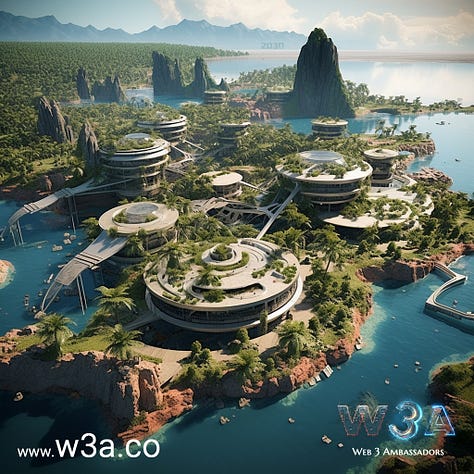
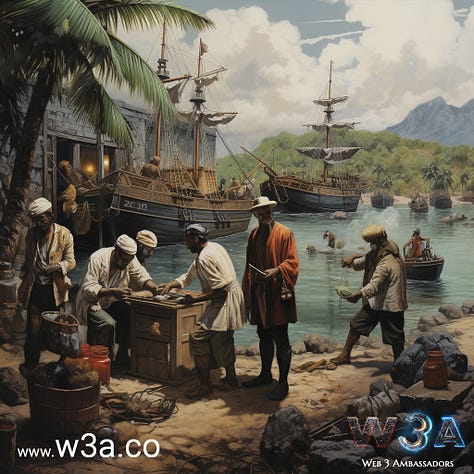
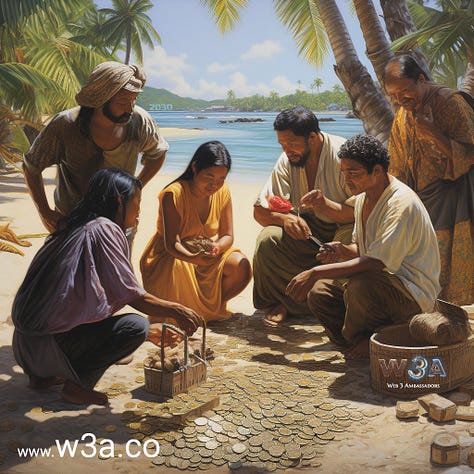
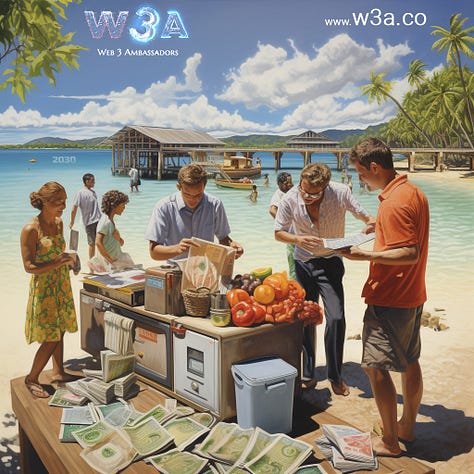
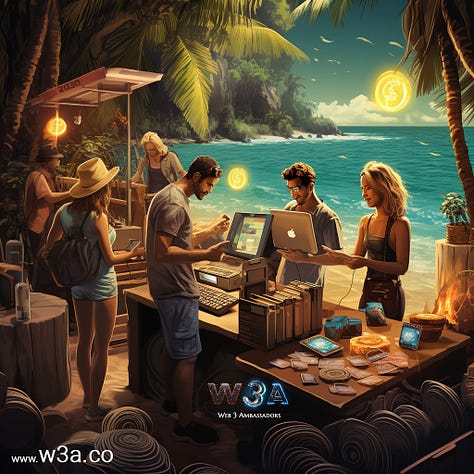
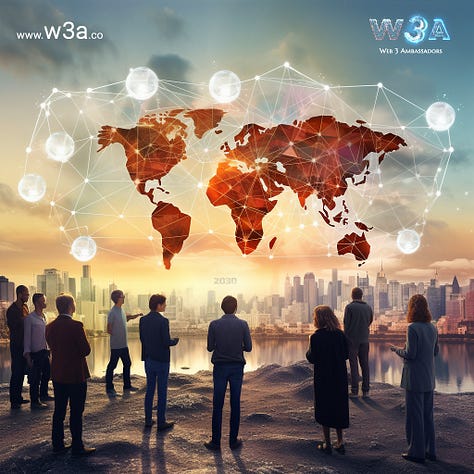
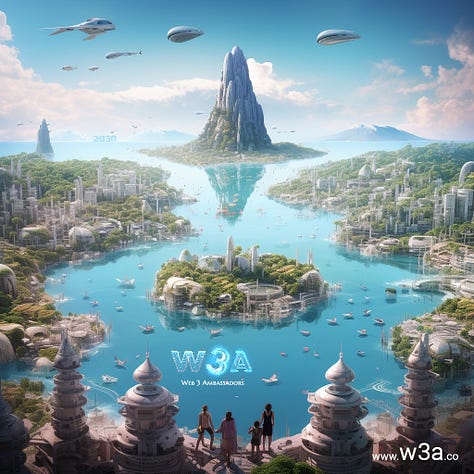
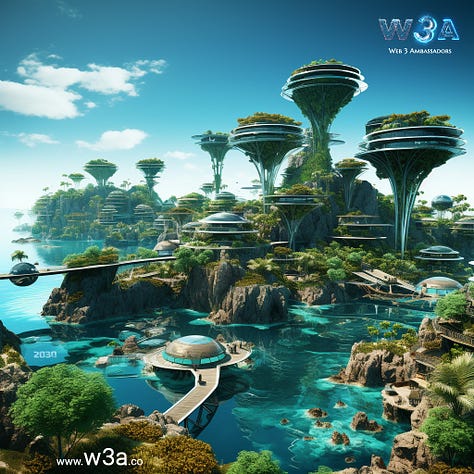
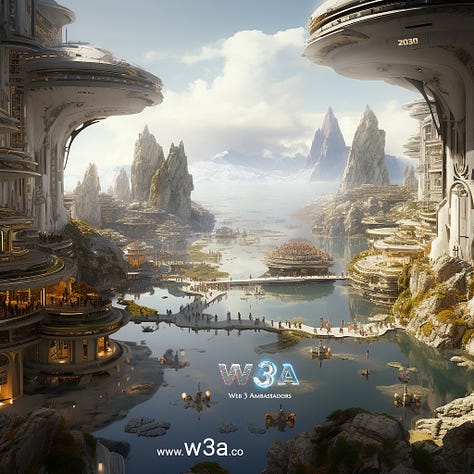
Join the Movement!
Are you ready to be at the forefront of the digital revolution? Subscribe to our newsletter and become a part of the Web 3 Ambassadors community! Stay informed about the latest insights, innovations, and trends shaping the decentralized future.
But why keep all this transformative knowledge to yourself? Share this edition with at least one friend, and let's expand the circle of Web 3 Ambassadors. Together, we can empower more individuals to embrace the potential of Web 3.0 and shape a more decentralized, inclusive digital landscape.
Subscribe now and spread the vision of a Web 3 future!



